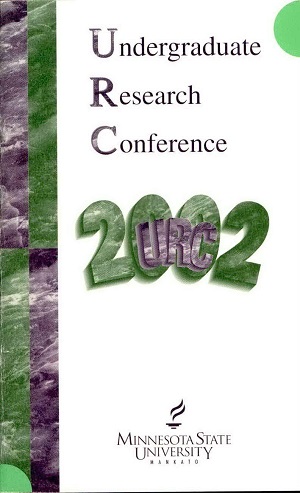PCR Detection of Clostridium botulinum Type C1 Toxin Gene from Swan Lake and Middle Lake Sediment Samples
Location
CSU
Student's Major
Biological Sciences
Student's College
Science, Engineering and Technology
Mentor's Name
Elaine O. Hardwick
Mentor's Department
Biological Sciences
Mentor's College
Science, Engineering and Technology
Description
Clostridium botulinum is an anaerobic, spore-forming bacterium known to produce neurotoxins. One particular toxin, Type Cj causes avian botulism, a serious paralytic disease of birds that kills several million waterbirds annually. A two-year study will be performed to determine (i) if the Type C, toxin gene is present in Swan and Middle Lakes and (ii) if different variables (pH, temperature, salinity, oxygen concentration, water depth, and season) affect gene presence. On a monthly basis, extraction of total DNA from sediment samples and measurement of environmental variables will occur from October 2001- October 2003 (excluding months with ice-cover). At the present time, October and November 2001 samples have been obtained and optimization of DNA extraction and Polymerase Chain Reaction (PGR) methodologies are ongoing. The second year of the study will include additional analyses of waterfowl food resources (e.g., macroinvertebrates) for presence of the toxin gene. Presentation will include current data and procedures.
PCR Detection of Clostridium botulinum Type C1 Toxin Gene from Swan Lake and Middle Lake Sediment Samples
CSU
Clostridium botulinum is an anaerobic, spore-forming bacterium known to produce neurotoxins. One particular toxin, Type Cj causes avian botulism, a serious paralytic disease of birds that kills several million waterbirds annually. A two-year study will be performed to determine (i) if the Type C, toxin gene is present in Swan and Middle Lakes and (ii) if different variables (pH, temperature, salinity, oxygen concentration, water depth, and season) affect gene presence. On a monthly basis, extraction of total DNA from sediment samples and measurement of environmental variables will occur from October 2001- October 2003 (excluding months with ice-cover). At the present time, October and November 2001 samples have been obtained and optimization of DNA extraction and Polymerase Chain Reaction (PGR) methodologies are ongoing. The second year of the study will include additional analyses of waterfowl food resources (e.g., macroinvertebrates) for presence of the toxin gene. Presentation will include current data and procedures.



